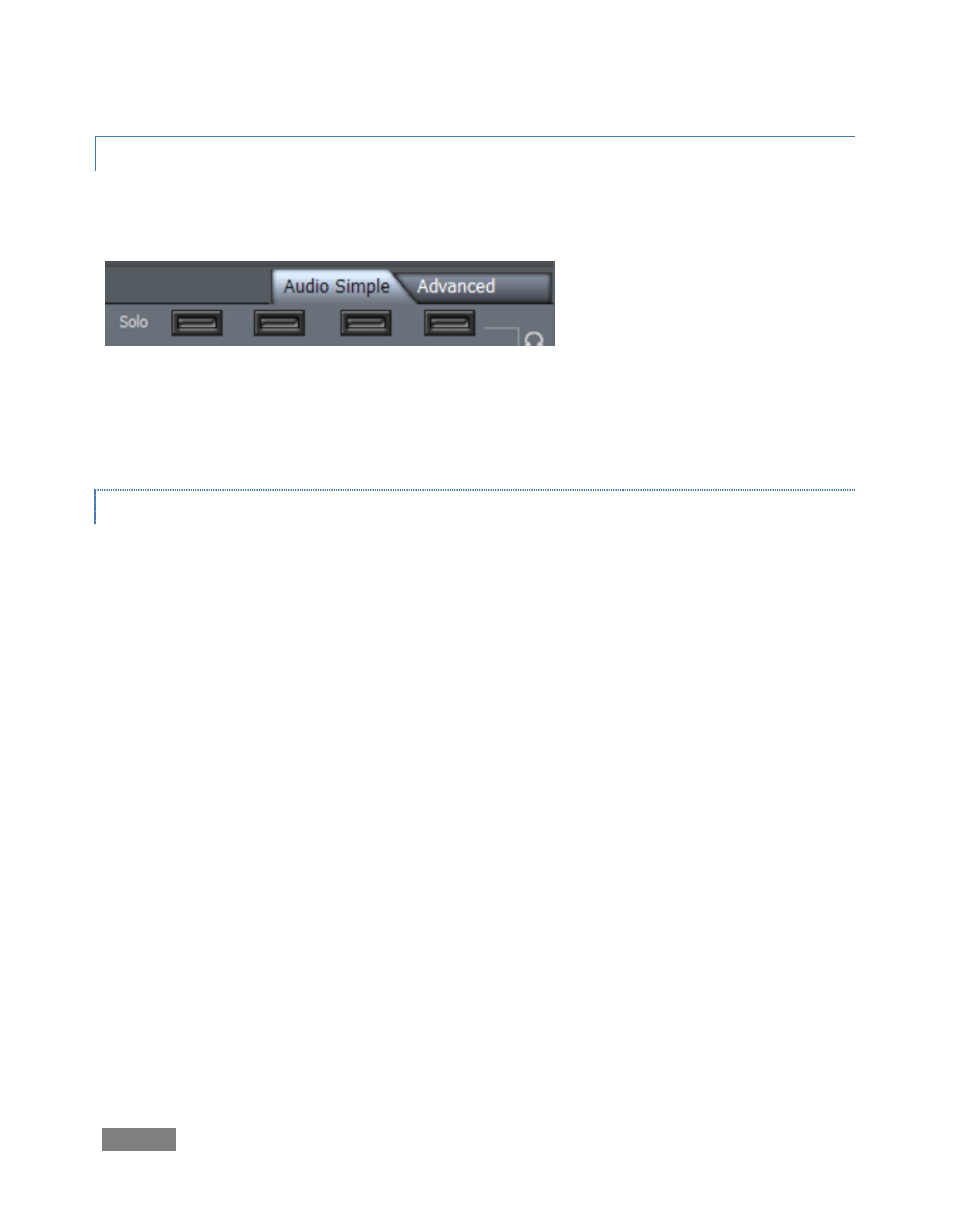Basic audio controls – NewTek TriCaster Studio User Manual
Page 116

Page | 96
6.11.1 BASIC AUDIO CONTROLS
We’ll consider the Audio Mixer tabs separately. However, first let’s look at some common
features, then go on to discuss their unique aspects.
Figure 106
The top row (just below the tabs) for both the Audio Simple and Advanced tabs is similar for all
models (although the number and type of audio sources shown varies.)
SOLO
The top row (just below the tabs) for both the Audio Simple and Advanced tabs is similar. Here
we find the Solo buttons for Mic and Line inputs as well as the DDR.
When enabled, Solo buttons illuminate in green, and cut audio from all other (non-soloed) inputs
on the Headphone output. This means that when Solo is enabled for one or more audio sources,
only the audio from soloed channels is sent to Headphones.
Two applications of Solo are of particular interest:
To preview an audio source on Headphone output (without allowing the audience to
hear it), enable both Mute and Solo for the channel. Enabling Solo does not remove the
respective channel from the master Audio Out stream. Muting the soloed channel
silences it on Audio Out, without affecting Headphone output.
Conveniently, Solo allows you to create an ersatz ‘mix-minus’ audio output. This is
useful when you need a secondary output to supply only specified audio sources. For
example, for a remote interview by telephone of Internet hookup, you may wish to send
the remote person program audio mix minus his or her own voice, avoiding annoying
feedback or echo.